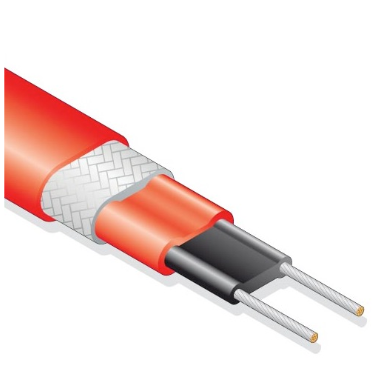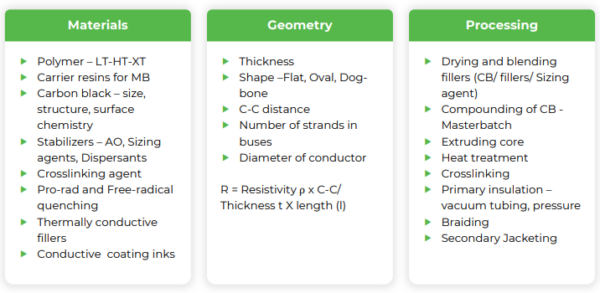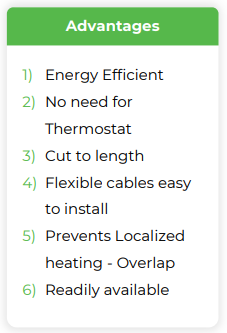Exploring the Dynamics of Self-Regulating Heating Cables

Introducing SR (Self-Regulating) heating cables opens the door to innovative heating solutions that revolutionize efficiency and reliability across various industries.
SR heating cables, equipped with an electro-mechanical mechanism, adjust their electrical output in response to ambient temperature changes. This unique functionality makes them indispensable in industrial processes, construction projects, and consumer applications. Moreover, SR heating cables ensure consistent heat distribution, preventing overheating and minimizing energy wastage.
You can also read: Synergists: Boosting Flame Retardant Effectiveness
Understanding SR Heating Cables
SR heating cables, commonly known as “PTC” cables in heat tracing, demonstrate a unique behavior. Their electrical output decreases with rising ambient temperature and conversely increases as ambient temperature decreases. These cables consist of two parallel conductors of several nickel-coated tin strands enclosing a semi-conductive polymer composite core. The core receives insulation with primary insulation and optionally shields with a tin-copper braid. Consequently, all of this encases within a protective outer jacket.
Technical Fabrication Insights
Designing SR cable involves meticulous consideration of various factors spanning materials, geometry, and processing.

Technical considerations to design SR cables. Courtesy of Self-regulating heating cables: materials, processing, and performing insights. ANTEC 2024.
Also, durable SR heating cable with a stable heat output design requires meticulous attention to detail and precision at every stage. The current step-wise process involves intermittent testing, resulting in varied outcomes depending on the tools and techniques employed. However, a preferred approach arises through the “direct extrusion” process. This method integrates inline wire coating, core extrusion, heat treatment, insulation, and crosslinking seamlessly, offering a streamlined and continuous manufacturing flow. By adopting this approach, manufacturers can significantly reduce downtime and enhance reliability.
Promising Advantages of SR Heating Cables
SR cable heaters offer various advantages, making them an attractive option for temperature control solutions.

Advantages of SR heating cables. Courtesy of Self-regulating heating cables: materials, processing, and performing insights. ANTEC 2024.
Current Challenges
Common issues with SR cables present various challenges:
- Inrush Current
- Thermal Resistance
- Electrical Contact Resistance
- Degradation
- Measurement Accuracy
- Step-wise Manufacturing Process
Testing Criteria
Test methods play a main role in evaluating the durability and reliability of SR heater cables. Presently, four methods are employed to validate their robustness:
- Passive aging
- Active aging
- Cyclic testing
- Linearity ratio measurements Rt/Ri, Pf, T /Pi, T
Fixing Gaze on Efficiency and Reliability
In conclusion, delving into SR heating cables reveals innovation poised to revolutionize efficiency and reliability. Understanding their behavior and design underscores their significance. Fabricating durable SR cables demands precision and streamlined processes like direct extrusion. Despite challenges, SR cables offer energy efficiency and ease of installation. Evaluation methods ensure durability and reliability in diverse environments. Embracing SR heating cables promises enhanced performance and efficiency.
